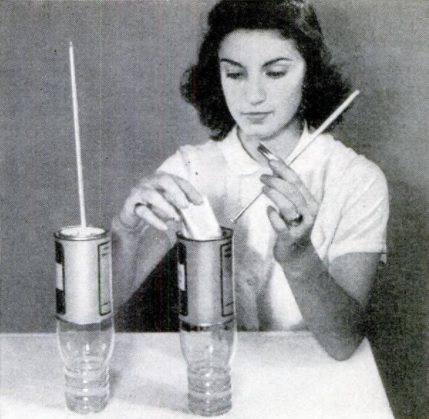 Eighty years ago, this young woman was conducting a scientific experiment to determine the best way to maintain ice in an icebox. In 1941, not everyone had a refrigerator. The icebox was still common. It was nothing more than in insulated box in which ice, usually delivered by the iceman, was placed to keep the food cold.
Eighty years ago, this young woman was conducting a scientific experiment to determine the best way to maintain ice in an icebox. In 1941, not everyone had a refrigerator. The icebox was still common. It was nothing more than in insulated box in which ice, usually delivered by the iceman, was placed to keep the food cold.
You had to pay for the ice, so the natural tendency of the frugal housewife would be to wrap up the ice in a towel to make it last longer. This experiment showed that this was false economy. As Popular Science, March 1941, puts it, by saving the ice, you’re spoiling the food.
To prove this, she made prepared two identical cans, making one hole at the top and one hold at the bottom of each. The bottom hole was for drainage, and the top hole was for a thermometer. Into each can was placed an ice cube. One was wrapped in paper and the other was bare.
When a thermometer was placed in each, the one with the unwrapped ice would be colder, although the ice would last longer.
The modern student could replicate this experiment quite nicely. Even though we no longer use ice boxes in the home, the experiment demonstrates the best procedure for use in a travel cooler. In addition to measuring the temperature inside the can, the student could compare the length of time the ice lasted.
